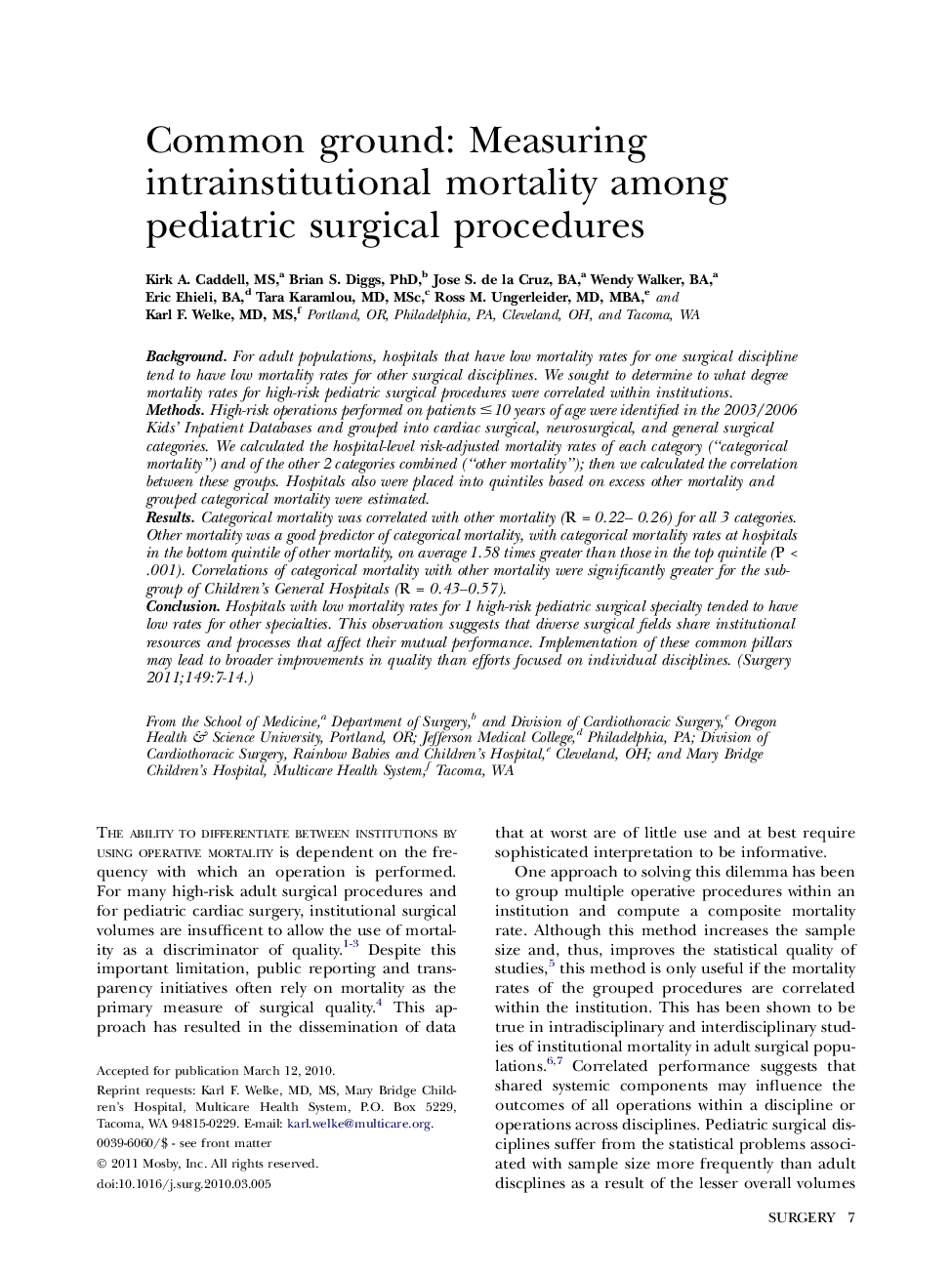| Article ID | Journal | Published Year | Pages | File Type |
|---|---|---|---|---|
| 4309003 | Surgery | 2011 | 8 Pages |
BackgroundFor adult populations, hospitals that have low mortality rates for one surgical discipline tend to have low mortality rates for other surgical disciplines. We sought to determine to what degree mortality rates for high-risk pediatric surgical procedures were correlated within institutions.MethodsHigh-risk operations performed on patients ≤10 years of age were identified in the 2003/2006 Kids' Inpatient Databases and grouped into cardiac surgical, neurosurgical, and general surgical categories. We calculated the hospital-level risk-adjusted mortality rates of each category (“categorical mortality”) and of the other 2 categories combined (“other mortality”); then we calculated the correlation between these groups. Hospitals also were placed into quintiles based on excess other mortality and grouped categorical mortality were estimated.ResultsCategorical mortality was correlated with other mortality (R = 0.22–0.26) for all 3 categories. Other mortality was a good predictor of categorical mortality, with categorical mortality rates at hospitals in the bottom quintile of other mortality, on average 1.58 times greater than those in the top quintile (P < .001). Correlations of categorical mortality with other mortality were significantly greater for the subgroup of Children's General Hospitals (R = 0.43–0.57).ConclusionHospitals with low mortality rates for 1 high-risk pediatric surgical specialty tended to have low rates for other specialties. This observation suggests that diverse surgical fields share institutional resources and processes that affect their mutual performance. Implementation of these common pillars may lead to broader improvements in quality than efforts focused on individual disciplines.
